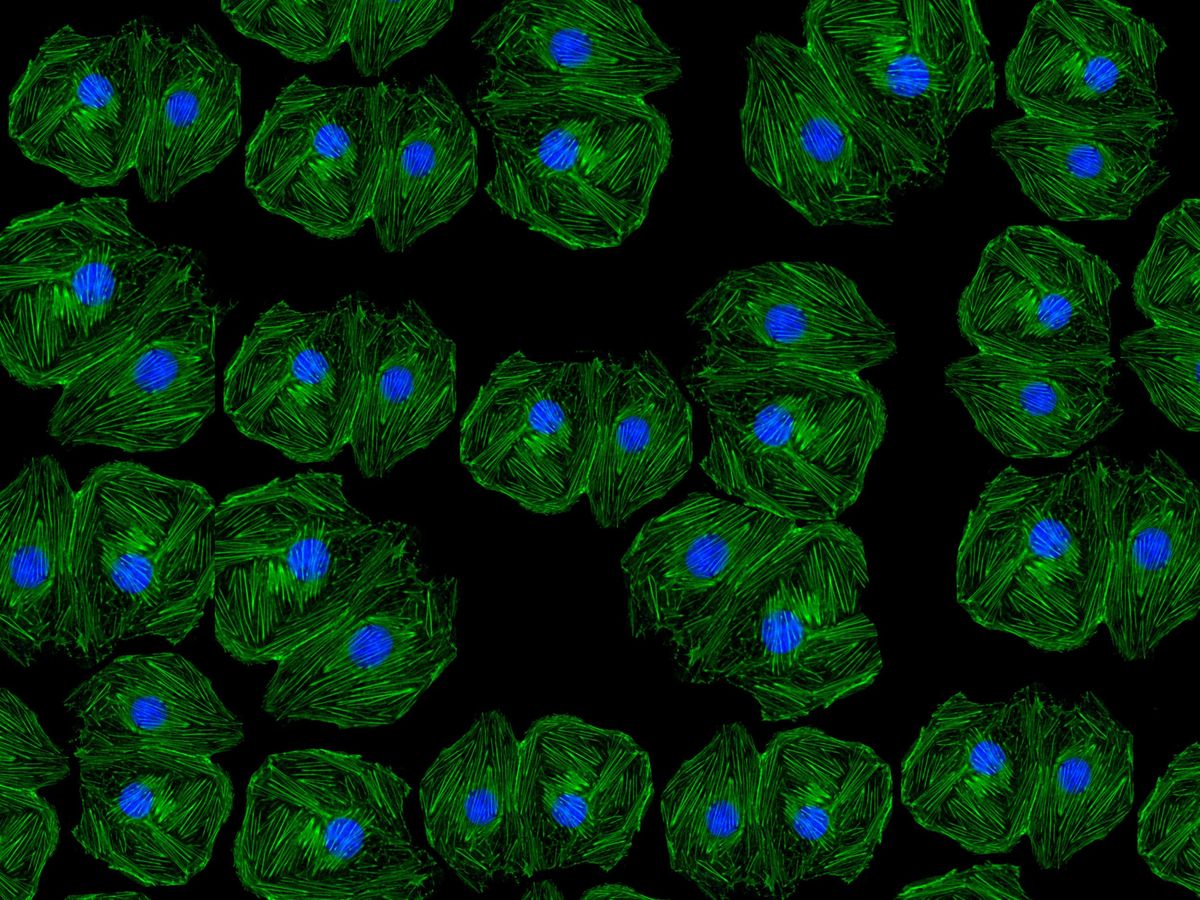Broken bones can be an incredibly painful experience, but they also signal the start of a healing process that, for some patients, takes far too long to happen. In healthy patients with a bone fracture, after about two weeks, bodies begin to fill in the break with new bone cells—called osteoblasts. However, disease or trauma can make this natural healing process very difficult or even in some cases impossible.
Bone tissue engineers are attempting to solve this problem today by delivering lab-made osteoblasts directly to the damaged bone. This is done in part by stimulating the growth of stem cells using an electric charge—similar to the kind a body’s neurons might emit—to trigger the transition from a generic stem cell to a specialized bone cell. In the future, this kind of technology may be applied like an internal band aid to artificially fix a bone defect that the body itself cannot repair.
“Piezoelectric materials, triggered in some way, can generate electric signals which should be useful for bone regeneration.”
—Jinlian Hu, City University of Hong Kong
Yet, creating solutions as reliable and efficient as the human body’s natural repair systems has proven difficult. Now, research into electrically charged nanofiber textiles is pointing toward a possible new kind of therapy.
Jinlian Hu is a professor of biomedical engineering at the City University of Hong Kong. She says that past work with nanofiber textiles, which are made from a class of conductive materials called piezoelectrics, inspired her to apply them to bone regeneration.
“We have developed a number of [piezoelectric] devices as wearable sensors, which can harvest energy… through physiological activities such as breathing, pulse movement, and running,” she says. “This gives us the confidence that piezoelectric materials, triggered in some way, can generate electric signals which should be useful for bone regeneration.”
Piezoelectric materials are unique because they do not require an external charge or battery to generate electricity. Instead, these materials can generate their electricity as a result of pressure changes from being deformed, such as being pressed, pulled, or stretched.
This is a key advantage when it comes to tissue regeneration, because even the tiny movement of cells is enough to stimulate piezoelectricity, thus further stimulating the stem cells’ growth, Hu says. The porosity and softness of woven, nanofiber textiles also make them a good analog of a cell’s natural environment in the body, she adds.
In this work, Hu and colleagues used a piezoelectric polymer called polyvinylidene fluoride (PVDF) and looked to see how varying parameters of its creation could increase piezoelectric output.
One aspect that affects the piezoelectricity of the PVDF textiles is the orientation of the fibers within the textile. While previous results of Hu’s pointed toward aligned fibers generating higher electric yield, the team tested the effects of both aligned and randomly ordered fibers.
The researchers also tested whether annealing both of these fiber orientations—a heating process that shifts the phase of molecules in the fibers—would affect the textiles’ piezoelectricity and ability to stimulate stem cell growth.
As expected, the researchers found that annealing the textiles at a temperature of 100 degrees Celsius improved their ability to generate electric charge. As a result, the team report that bone development (a.k.a. osteogenesis) induced by the annealed textiles was nearly two times better than the unannealed textiles.
While annealing the textiles was beneficial to both the aligned and random fiber distributions, the team was surprised by which orientation performed better overall. Hu and colleagues found that annealed and randomly-ordered textiles performed best in creating a larger piezoelectric effect and stimulating osteogenesis. This result may be due in part to the random order of the fibers creating a greater overall surface area for the cells to adhere to, the researchers write.
In addition to demonstrating a path for improving bone tissue engineering, the group’s findings also offer an opportunity for biomedical researchers to further investigate what drives stem cell growth in the first place. Which in turn might also help determine at what point in the process disease plays a role.
Meanwhile, Hu says that she’s interested in discovering how this textile could be tested in practice as well as applied beyond bone repair, including nerves, tendons, and ligaments—and, she adds, “animal modelling for bone regeneration.”
The researchers published their work in a recent issue of the journal Advanced Functional Materials.
- New Bioprinter Makes It Easier to Fabricate 3D Flesh and Bone ... ›
- Microbots Deliver Stem Cells in the Body - IEEE Spectrum ›
Sarah Wells is a science and technology journalist interested in how innovation and research intersect with our daily lives. She has written for a number of national publications, including Popular Mechanics, Popular Science, and Motherboard.



